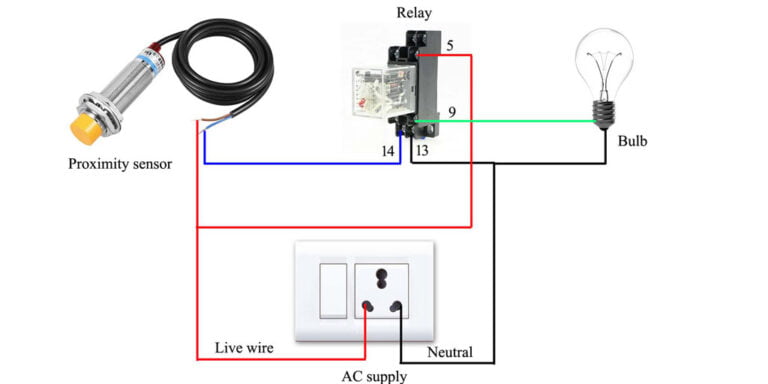Overview
Inductive proximity sensors are indispensable tools in various industries, such as automation, automotive, and manufacturing, due to their ability to detect the presence of metallic objects without physical contact. Among the different types of these sensors, two-wire inductive proximity sensors are particularly popular for their simplicity and ease of installation. This article delves into the workings, advantages, and applications of two-wire inductive proximity sensors.
What is Two-Wire Inductive Proximity Sensor?
Two-wire inductive proximity sensors are non-contact devices used to detect the presence or absence of metallic objects in close proximity. They operate on the principle of electromagnetic induction, where a change in the magnetic field causes an induced current in a nearby metallic object. The sensors consist of an oscillator, a detection coil, and signal processing circuitry, all housed within a compact, rugged enclosure.
Unlike other types of inductive sensors, which may require three or more wires for power and signal transmission, two-wire sensors reduce the complexity of the wiring setup by utilizing only two wires for both power supply and signal output. This simplification makes them more cost-effective and easier to install, especially in applications with limited space or where long cable runs are necessary.

2 wire inductive proximity sensor circuit, source from: https://www.academia.edu/43611433/Inductive_Proximity_Switches
How does Two-Wire Inductive Proximity Sensor Work?

An inductive proximity sensor comprises of 4 parts, they are detection coil, oscillation circuit, oscillation state sensing circuit and output circuit, therefore, a sensor working will pass 4 priods, see the 4 stages below:
- Oscillator: The oscillator generates an alternating magnetic field by passing an alternating current through the detection coil. This magnetic field extends beyond the sensor face and into the surrounding environment.
- Detection: When a metallic object enters the sensor’s detection range, the magnetic field induces eddy currents in the object. These eddy currents generate a secondary magnetic field that opposes the original magnetic field produced by the sensor.
- Signal Processing: The interaction between the two magnetic fields results in a change in the oscillator’s amplitude or frequency. The sensor’s signal processing circuitry detects this change and produces an output signal, typically in the form of a voltage or current change.
- Output: The output signal travels through the same two wires that supply power to the sensor, making it a two-wire system. The output signal can be processed by external devices, such as programmable logic controllers (PLCs), to make decisions based on the presence or absence of the detected object.
Advantages of Two-Wire Inductive Proximity Sensor

- Simplified Wiring: With only two wires needed for both power and signal transmission, two-wire sensors reduce installation complexity and cost.
- Compact Design: Due to the reduced wiring requirements, two-wire sensors can be designed to be smaller and more compact than their three-wire counterparts, making them ideal for space-constrained applications.
- High Reliability: The non-contact nature of inductive proximity sensors eliminates mechanical wear and tear, resulting in increased longevity and reliability.
- Wide Range of Applications: Two-wire inductive proximity sensors can be utilized in various industries and applications, such as assembly lines, conveyor systems, and automotive manufacturing.
Applications of Two-Wire Inductive Proximity Sensor
- Position Detection: In industrial automation, two-wire sensors are commonly used to detect the position of machine components, ensuring that processes run smoothly and efficiently.
- Object Counting: Sensors can be installed along conveyor systems to count the number of items that pass through, providing valuable data for production monitoring and inventory management.
- Safety Applications: Two-wire inductive proximity sensors can be used as safety devices to detect when a metallic object, such as a person wearing a metal safety badge, enters a hazardous area.
- Quality Control: In manufacturing, two-wire sensors can help identify missing or misplaced components on a product, ensuring that only high-quality items reach the end customer.
Conclusion
In conclusion, two-wire inductive proximity sensors offer a simple, reliable, and cost-effective solution for detecting the presence of metallic objects in various industrial applications. Their ease of installation and ability to operate in harsh environments make them a popular choice for engineers and designers looking to improve the efficiency and safety of their systems.






